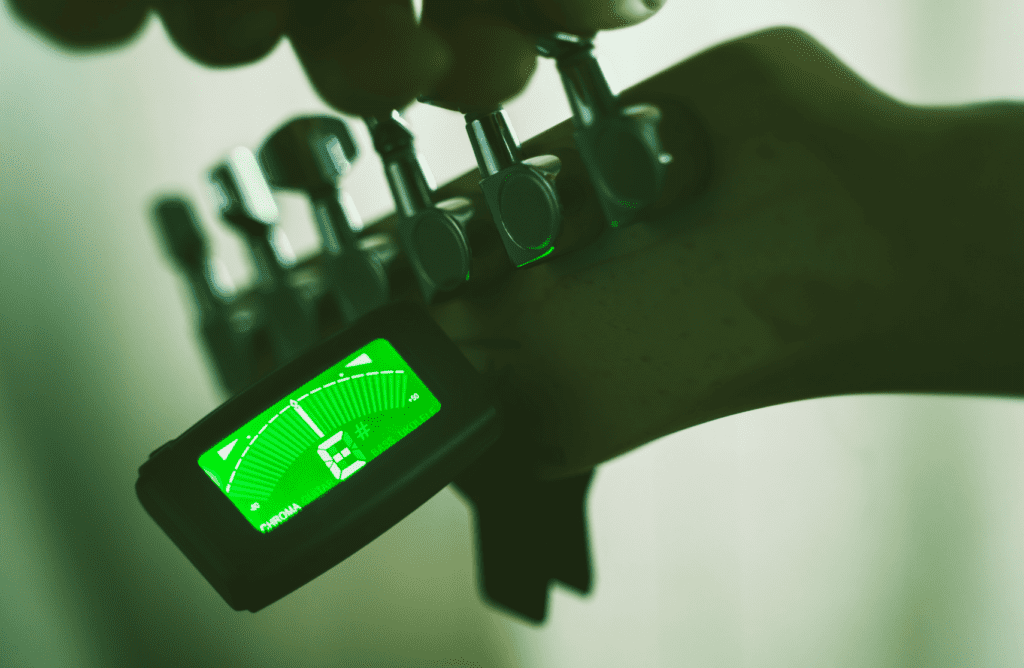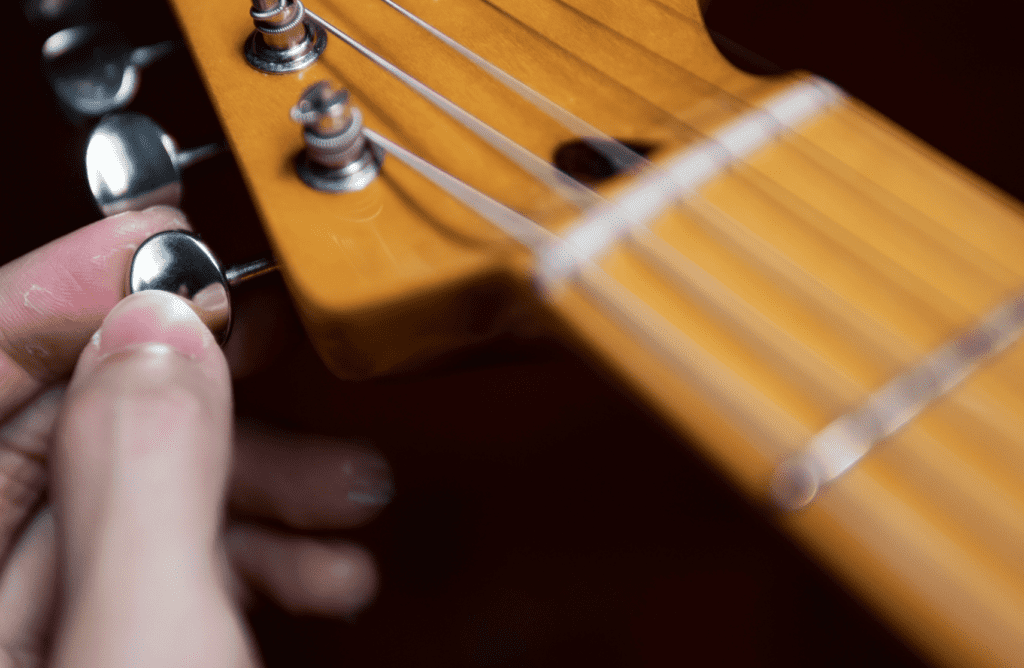The guitar is a versatile instrument that can produce beautiful music if played the right way.
You not only need to know how to play the guitar well, but you need the right instrument in
the right tuning as well. Learning to tune a guitar by ear successfully is as important as playing the guitar itself. You cannot be a good guitarist and not know how to tune your own instrument on the fly. Although, when playing with others, it’s always a good idea to be properly tuned with a tuner.
If you have a guitar equipped with a Floyd Rose term system, read this post on how to tune a Floyd Rose guitar.
Table of Contents
No Tuner to be Found
No tuner? Wondering how to tune a guitar without a tuner? Well, with your ears, of course!
Yes, you can tune a guitar by just listening to your strings. Using your ears to understand
your strings and the notes they play is essential if you want to become a good guitarist. You
cannot always rely on other gadgets. It takes a lot of practice and attention to detail if you want to get good at tuning your guitar by ear. With a month’s practice, you will be able to tell when your guitar strings are off.

Before We Start
before we get to how to tune a guitar by ear, here are some basic things you should do:
- Get familiar with your pegs. Some guitars have all the pegs on one side, and some
models have them on either side. Please get to know your pegs before you can attempt
tuning them. - Turn the pegs to see which side makes them tighter and which side loosens them. You
will get to know if you have to turn it clockwise or anticlockwise when you want to
tighten the string. - Understand how the strings work first. If you notice carefully, you will see a
difference in the thickness. The guitar strings are lined from thickest to thinnest. - Next, start tuning one string after the other. You can play a reference note to
understand the right pitch of each string and tune it accordingly.
How To Tune A Guitar Without A Tuner?
Tuning a guitar without a tuner is often referred to as relative tuning. This is because these methods will make the guitar sound good on its own, but the notes themselves won’t necessarily be accurate. Some of the alternative methods you can use to tune your guitar without a tuner are:
The Fifth Fret Method
The most popular and simple technique for tuning a guitar to itself without a tuner. To tune a guitar to itself using the fifth fret method we’ll use the low E string as our reference.
- Play the low E string on the fifth fret, and then play the open A string
- Tune the A string to exactly match the note played on the E string
- Now that the A string is tuned relatively to the low E, repeat the process to tune the D and G strings.
- To tune the B string, follow the same process, but fret the G string on the forth fret instead.
- Now for the last string, the high E it tuned to match the B string’s fifth fret.
The Harmonic Method
Using natural harmonics to tune the guitar is a little more accurate than tuning by the fifth frets, but is a bit more complicated. Here too, we’ll tune the guitar to itself. It means that it will sound great on its own, but will probably not complement playing with other people.
Some Background About Harmonics
In this method, we’ll compare the harmonics of the strings. If you don’t know how to play the harmonics, it’s pretty simple. Gently put your finger on any string over the 12th fret. Don’t press it, just make sure that your finger touches the string and the string is not touching the fret. Play the string, this is called the 12th harmonic. If you raise the finger while the note ring, it won’t stop ringing. It basically cuts the string length by half, making it play a note an octave higher. There are other harmonics too, and today we’ll use the fifth fret harmonic, the seventh fret harmonic, and the ninth fret harmonic (which is a bit harder to play). Let’s start:
Tuning Your Guitar By Ear Using The Harmonoc Method
- Play the 5th harmonic on the Low E string and the 7th harmonics on the A string.
- If they are not perfectly in tune with each other, you’ll a hear very clear oscillation (you will also feel in on the guitar body). It will also sound very disonant.
- Adjust the A string until the oscilation is totally gone.
- Use the same process to tune the D and G strings
- To tune the B string, make the 9th harmonic on the on the G string and the 5th harmonic on the B string. Now, adjust the B string to match it.
- Play the 5th harmonic on the B string and the 7th harmonic on the high E string, and adjust the E string to the harmonics match. That’s it.
The Octave Method
The octave method always felt to me like some sort of a mash-up between the fifth fret and harmonics methods. It’s almost as simple as the fifth fret method, with the accuracy of the harmonics method. So without further ado, let’s see how you can tune your guitar by ear using the octave method.
- Play the open low E string, and the A string on the 7th fret.
- Adjust your A string with the picking hand, until both notes are exactly an octave apart (you’ll note that the sound becomes stable and the “beating” is gone).
- Tune your D and G strings in the same way
- As usual, tuning the B string is a bit than the rest. Here you’ll need to fret the 8th fret of the G string.
- Press the 7th fret of the B string to hit the E note to tume youe high E string, and that’s it. You’re fully tuned.

How To Tune A Guitar by Ear To Drop D?
Don’t worry; it is quite easy. Though alternate tuning can be complicated, Drop D is not so
complicated after all. The D string is the fourth string in your guitar. You need to ensure your
other strings are in tune before attempting this. To tune a guitar to Drop D by ear, start by tuning your entire guitar to standard tuning using any of the methods above. This simple method is built around a concept very similar to the octave method from above.
- Play your open D string for reference
- Lower the pitch of the lower E string
- When your lowest string sound is close to your open D, fine tune until the “oscilation beating” is gone. You will have a super stable D note ringing from the 2 strings, one octave apart.
Conclusion
Understanding the pitch relationship between your notes and becoming sensitive to them can take you a long way as a guitarist. You will be tuned in all the time and will be able to easily tell when your string pitch is off.